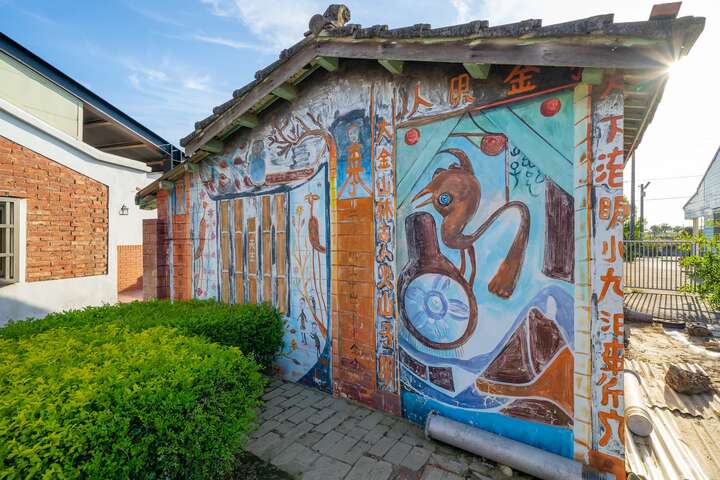Hung Tong's Former Residence Introduction
The Xin Cuo Zi located in Kunjianli, Beimen District, is the residence of the self-taught artist Hong Tong, known as the "Eastern Picasso." He started painting passionately at the age of fifty, despite being illiterate. His painting style is recognized for its mysterious script and rich colors, embodying a spiritual and enchanting quality. His early experiences with folk rituals and beliefs profoundly influenced his artistic spirit, leading to a sort of religious trance while creating art, resulting in works filled with lively, enchanting, and religious imagery. His paintings feature not only hieroglyphic-like images but also a sense of folk symbols. With an abstract and playful painting style, along with bold and vibrant colors, he attracted attention both domestically and internationally, even garnering a visit from then-President Chiang Ching-kuo. After gaining fame, even in times of financial hardship, Hong Tong refused to sell his paintings, adhering to his "three refusals": first, "not selling paintings," as he believed selling them would mean losing them forever and being unable to create the same again; second, "not painting ears," as he thought ears would lead him to hear worldly rumors and criticisms, so he avoided painting ears unless adorned with beautiful earrings, which is why many figures in his paintings lack ears; third, "not living in houses designed by others," rejecting government-provided housing and instead painting his own "Golden Luan Palace," hoping to build his own studio. Due to his unique personality and aversion to outside contact, he left behind an astonishing body of work and a mysterious life until his passing in 1978. The Yun-Jia-Nan Management Office has collaborated with local characteristics and community imagery to paint Hong Tong's artworks on community walls, allowing visiting tourists to learn about Hong Tong's life and experience his imaginative world. Within the village, aside from visiting Hong Tong's studio, visitors can also see slices of his past life and admire his works on residential walls. Additionally, there is a regular exhibition of Hong Tong's paintings at the Xin'an Temple in Kunjianli. Interested individuals are welcome to visit! The Yun-Jia-Nan Management Office notes that Hong Tong's deeds have gradually been forgotten, yet he remains an indelible legend of Beimen, one of the representative figures in the art and literature of the salt flats. It is unfortunate that he has been overlooked. They hope to create a cultural attraction at Hong Tong's former residence to lead tourists to explore every corner of Beimen. The Beimen area is not only a beautiful location for weddings but also a great place filled with the artistic atmosphere of the salt flats. Everyone is sincerely welcome to come and explore Hong Tong's enchanting and whimsical world.





































